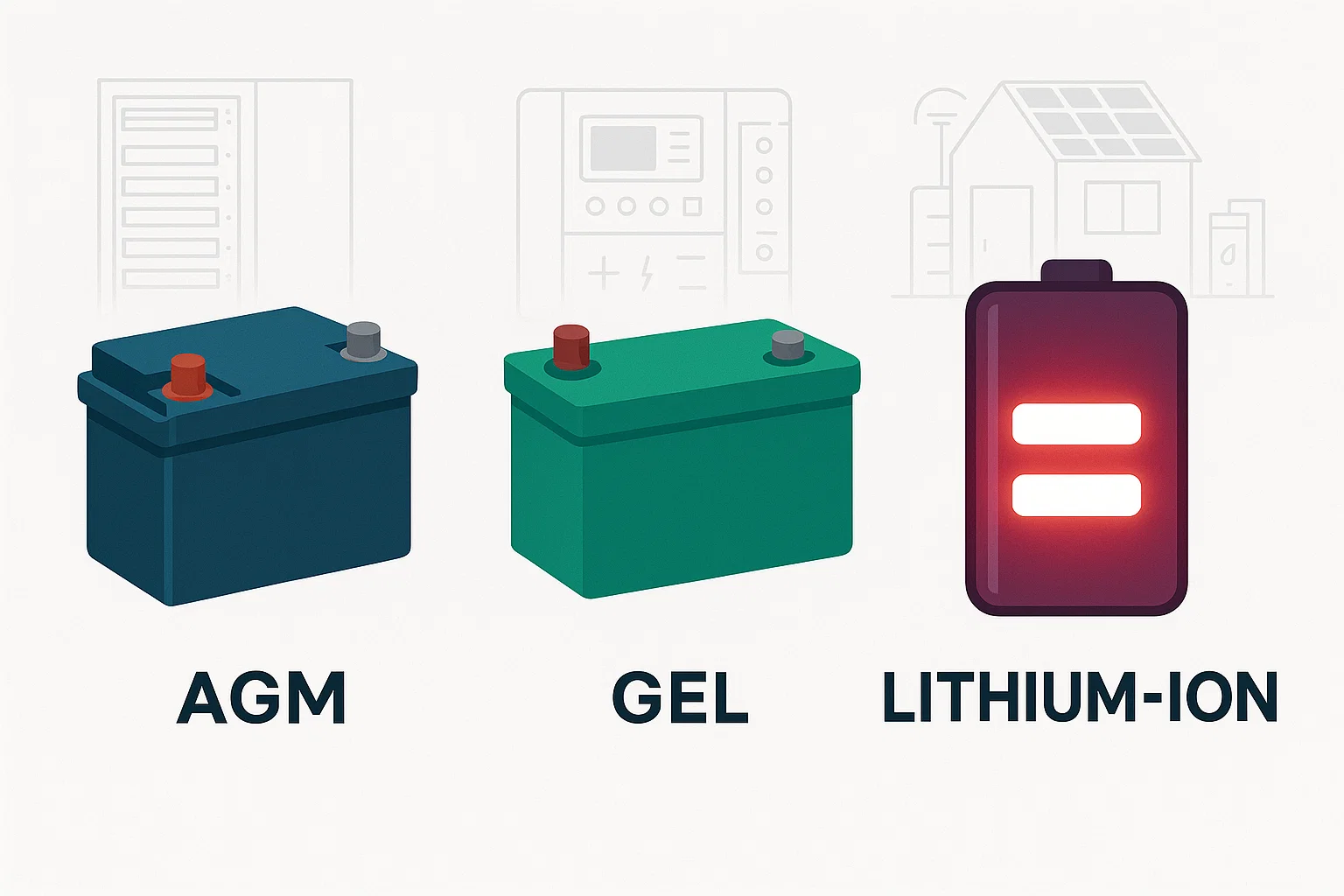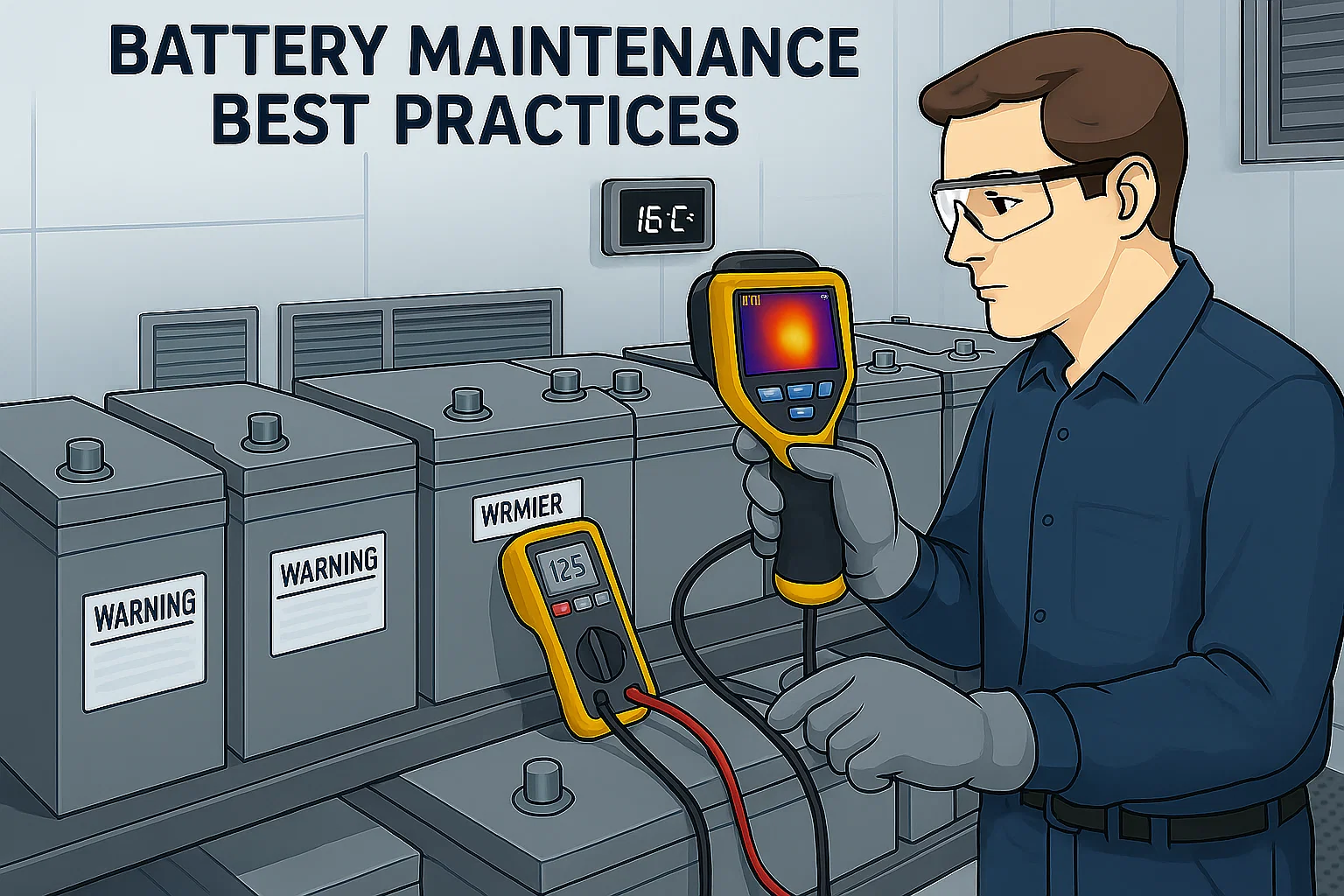Battery Technologies: Choosing the Right Solution for Your Application
Quickly compare AGM, Gel, and Lithium-ion battery technologies to select the optimal energy storage solution for your UPS and backup power needs.

Selecting the right battery technology is crucial for the reliability and efficiency of any UPS or backup power system. While numerous options exist, three types are most prevalent in industrial and commercial applications: AGM, Gel, and Lithium-ion. Each offers distinct advantages suited to different operational demands.
Comparing Key Battery Technologies
Understanding the fundamental characteristics of each type helps in making an informed decision:
-
AGM (Absorbed Glass Mat) Lead-Acid:
A cost-effective choice known for good performance in high-rate discharge applications, such as short-term UPS backup. They offer a moderate lifespan and are generally maintenance-free.
-
Gel Lead-Acid:
Similar to AGM but uses a gelled electrolyte, providing superior deep-cycle performance and better tolerance to temperature fluctuations. They have a lower high-rate capability compared to AGM but often come at a slightly higher cost, with a moderate to long lifespan.
-
Lithium-ion (Li-ion):
The premium choice for demanding applications. Li-ion batteries boast significantly higher energy density, a much longer cycle life (often 2-3 times that of lead-acid), and a lighter weight. While they have a higher upfront cost, their total cost of ownership (TCO) can be lower due to longevity and efficiency. They require a sophisticated Battery Management System (BMS) for safe operation.
Making the Right Selection
Consider the following factors when choosing your battery solution:
- Runtime & Discharge Profile: How long do you need backup power, and how quickly will the energy be drawn? Li-ion excels for long runtimes and frequent cycling, while AGM/Gel are suitable for shorter, less frequent discharges.
- Space & Weight Constraints: If footprint or weight is a concern (e.g., rack-mount solutions), Li-ion's high energy density is a major advantage.
- Temperature & Environment: Gel batteries generally handle wider temperature ranges better than AGM. Li-ion performance is also robust across temperatures, often with thermal management features.
- Total Cost of Ownership (TCO): Factor in initial cost, lifespan, replacement costs, and potential energy savings. Li-ion, despite higher initial expense, can offer lower TCO over its extended life.
Safety and Compliance
Regardless of technology, always adhere to manufacturer guidelines for installation, charging, and maintenance. Ensure proper thermal management, short-circuit protection, and compliance with all relevant safety standards (e.g., UL, IEC) to guarantee reliable and safe operation.
💡 In Summary: For budget-conscious projects in predictable environments with shorter backup needs, AGM or Gel batteries are excellent choices. For applications prioritizing long lifespan, high energy density, reduced weight, or demanding discharge cycles, Lithium-ion technology offers a superior, albeit higher upfront cost, solution with significant long-term benefits.

